Abstract
An anaerobic marine spirochete (strain MA-2) fermented glucose and formed ethanol, acetic acid, CO2, and H2 as end products. The organism required carbohydrates as growth substrates. Amino acids did not support the growth of strain MA-2. However, when the spirochete was grown in media containing branched-chain amino acids and glucose, significant quantities of 4- and 5-carbon branched-chain volatile fatty acids were formed in addition to products of glucose fermentation. Smaller quantities of branched-chain alcohols were also formed under these conditions. The spirochete converted l-valine, l-isoleucine, and l-leucine to isobutyric, 2-methylbutyric, and isovaleric acids, respectively. CO2 formation accompanied each of these conversions. Spirochete MA-2 did not require branched-chain amino acids for growth, but these compounds could serve as sole sources of nitrogen for the organism. In addition, the survival of starving cells (no growth substrate available) of spirochete MA-2 was prolonged significantly when l-valine, l-isoleucine, and l-leucine were present in starvation media. Starving cells fermented these amino acids, forming adenosine 5′-triphosphate and branched-chain fatty acids. Our findings indicate that energy derived from amino acid fermentation allows the spirochete to survive periods of growth substrate starvation. Apparently, dissimilation of branched-chain amino acids can provide this bacterium with maintenance energy for cell functions not related to growth. In its natural environment spirochete MA-2 may catabolize branched-chain amino acids as a strategy for survival when growth substrates are not available.
Full text
PDF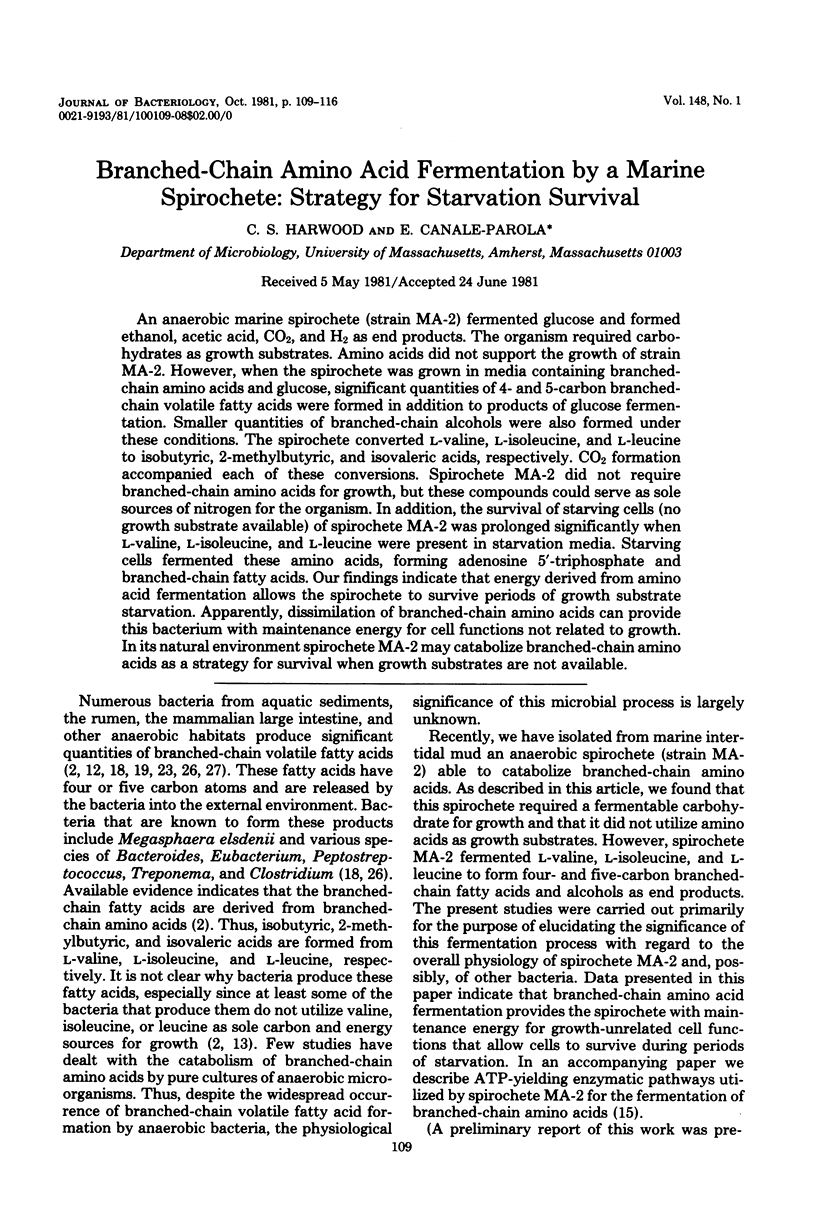
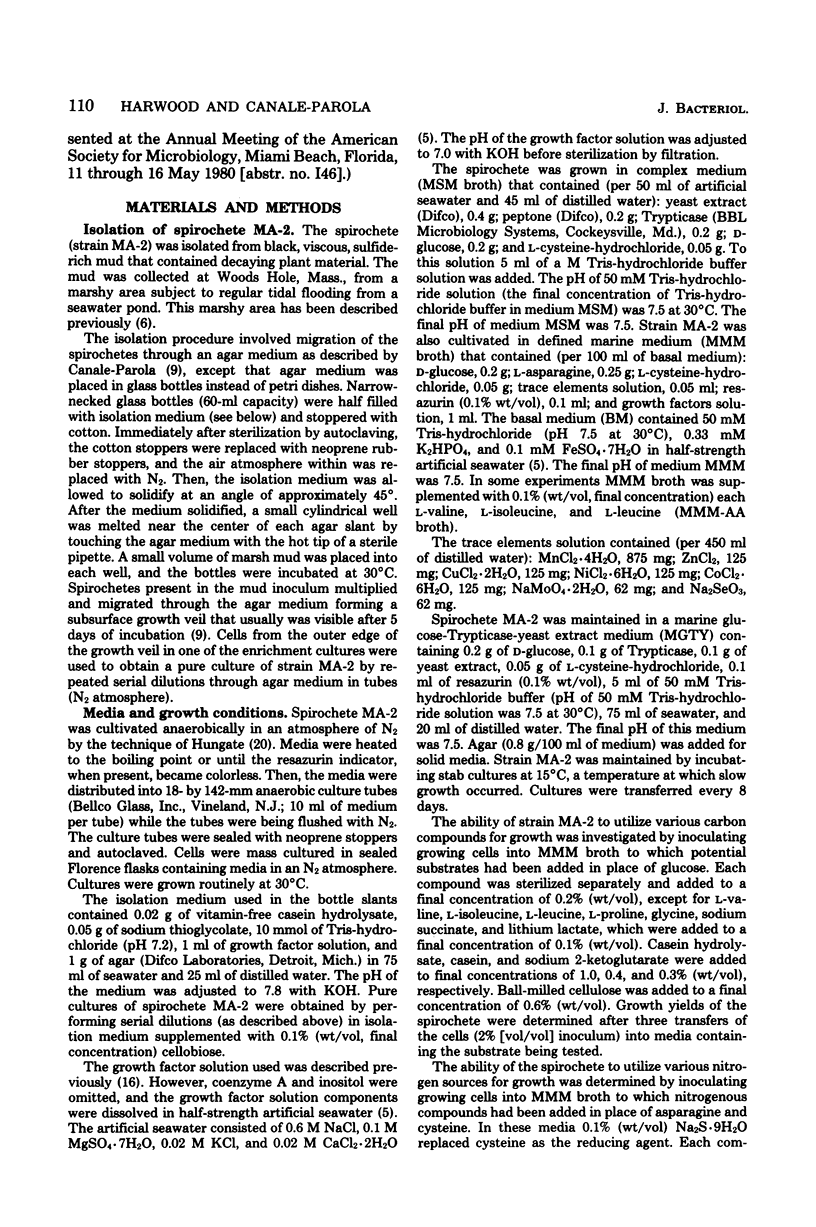
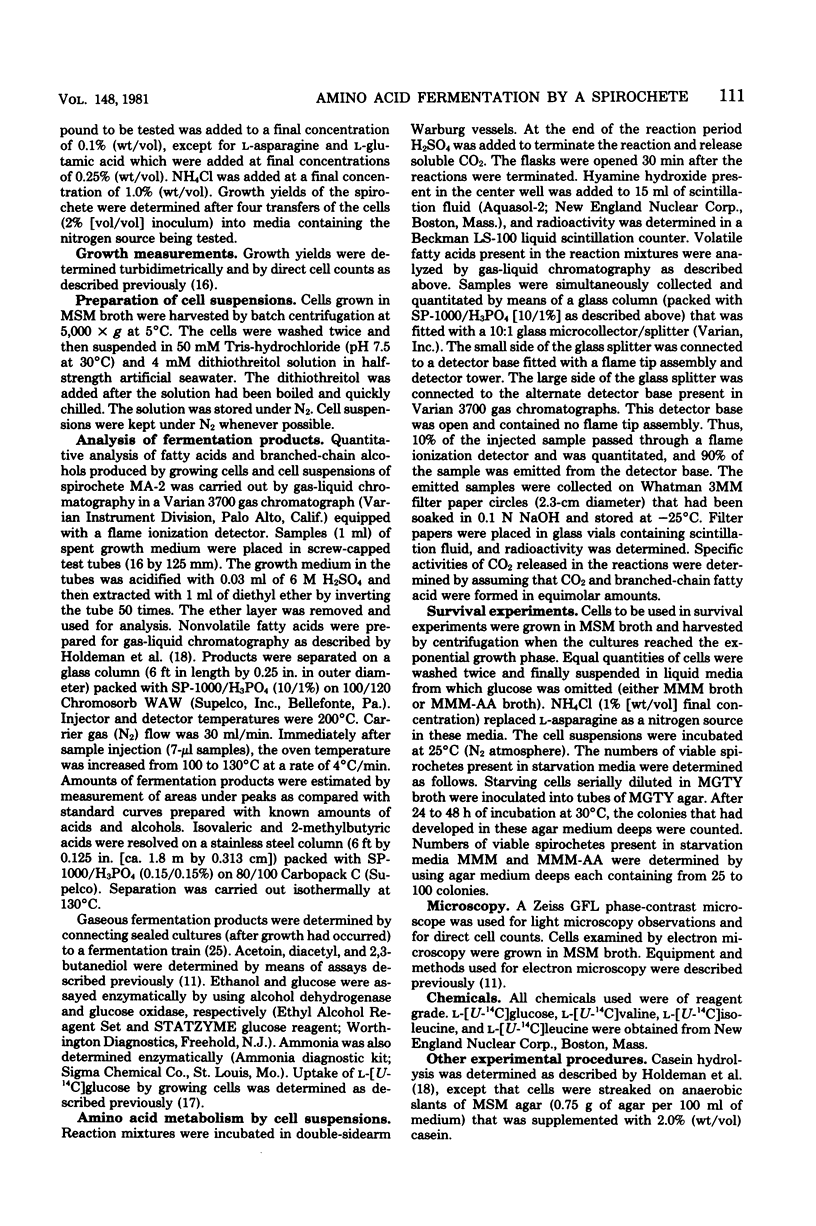
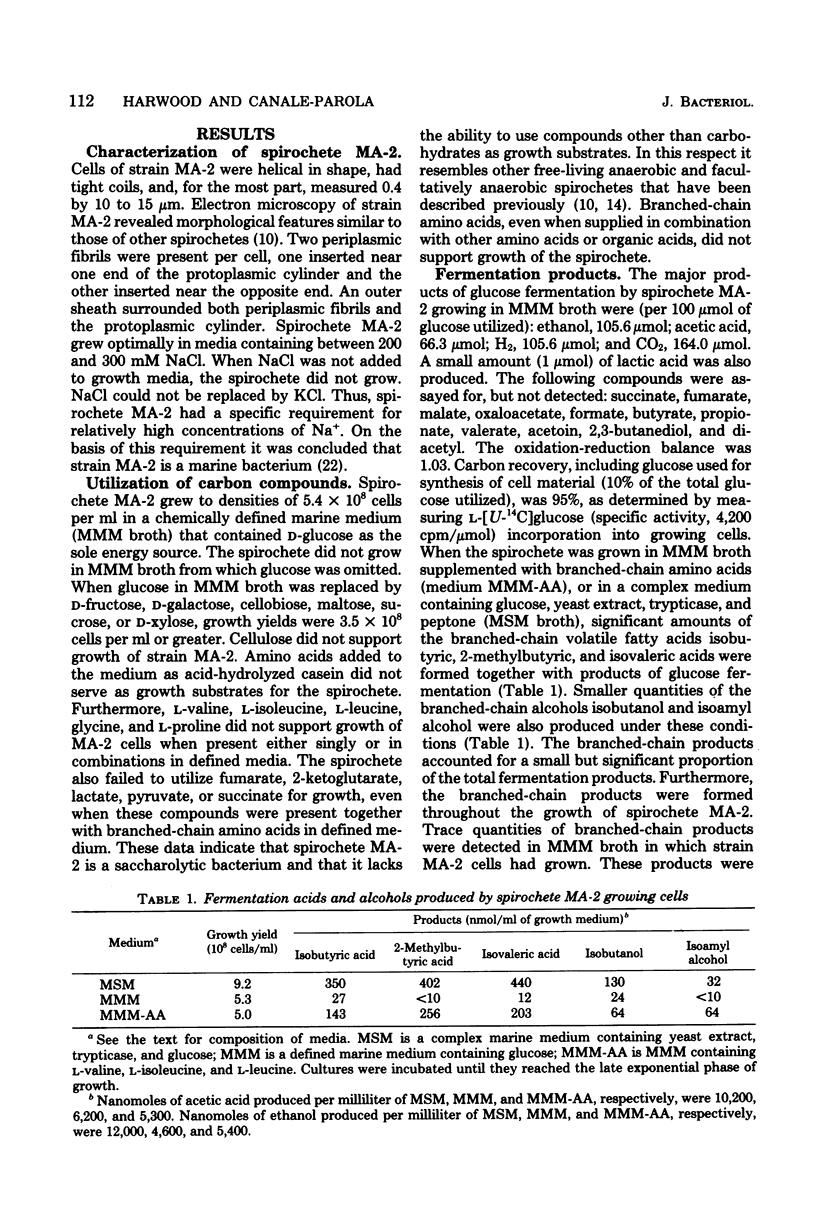
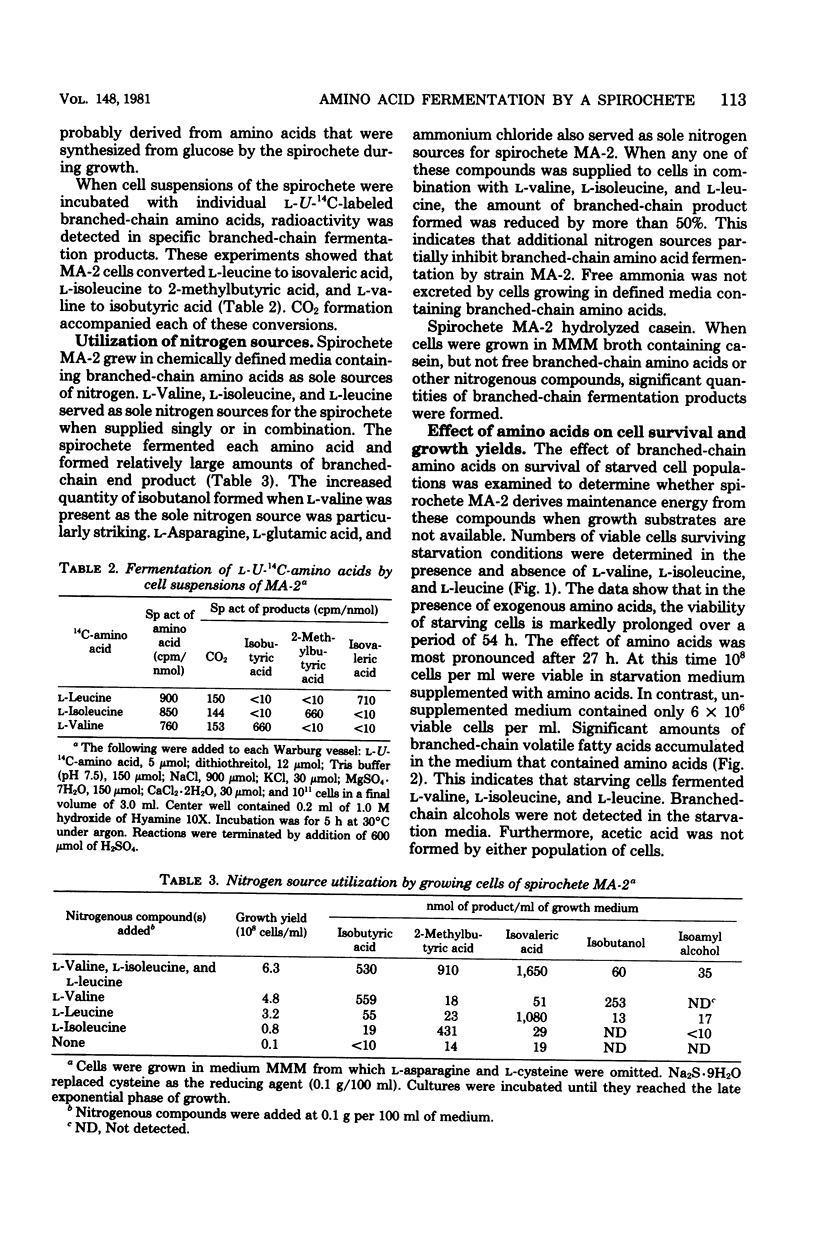
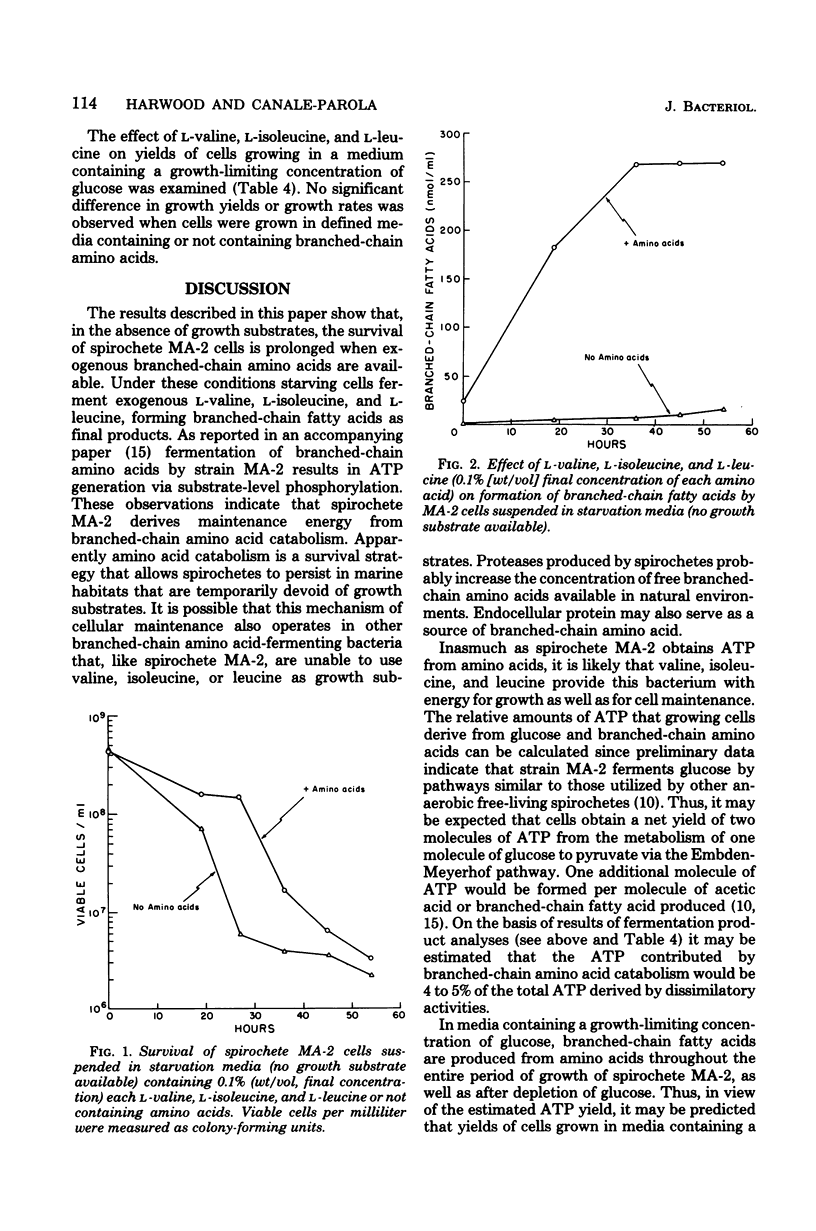
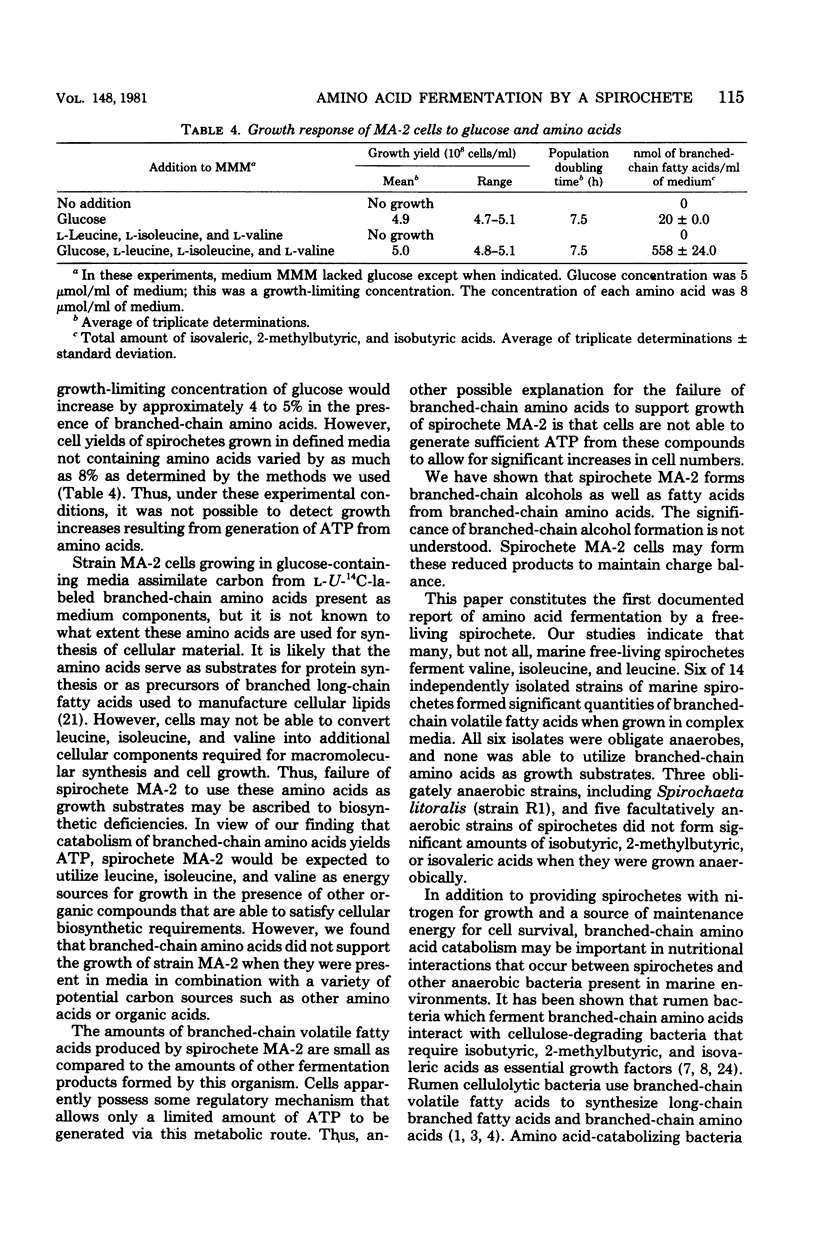
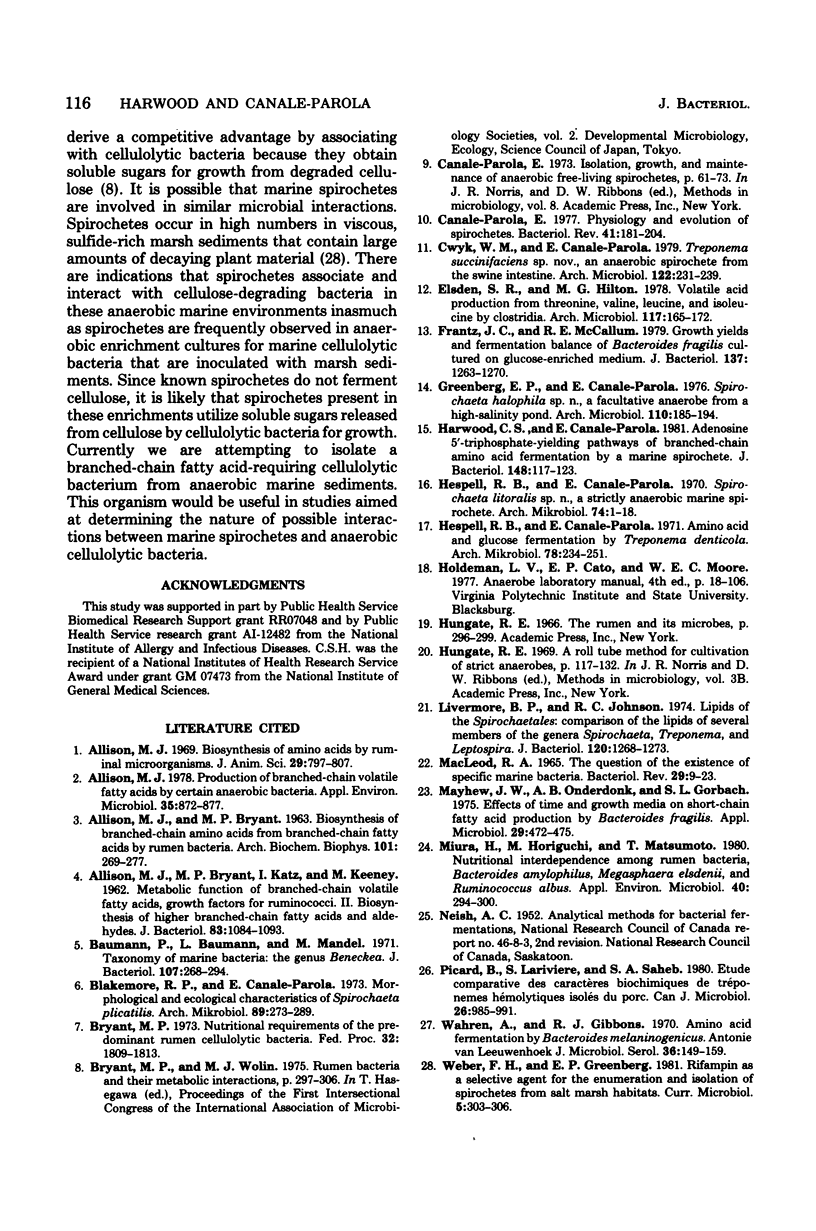
Selected References
These references are in PubMed. This may not be the complete list of references from this article.
- ALLISON M. J., BRYANT M. P. Biosynthesis of branched-chain amino acids from branched-chain fatty acids by rumen bacteria. Arch Biochem Biophys. 1963 May;101:269–277. doi: 10.1016/s0003-9861(63)80012-0. [DOI] [PubMed] [Google Scholar]
- ALLISON M. J., BRYANT M. P., KATZ I., KEENEY M. Metabolic function of branched-chain volatile fatty acids, growth factors for ruminococci. II. Biosynthesis of higher branched-chain fatty acids and aldehydes. J Bacteriol. 1962 May;83:1084–1093. doi: 10.1128/jb.83.5.1084-1093.1962. [DOI] [PMC free article] [PubMed] [Google Scholar]
- Allison M. J. Biosynthesis of amono acids by ruminal microorganisms. J Anim Sci. 1969 Nov;29(5):797–807. doi: 10.2527/jas1969.295797x. [DOI] [PubMed] [Google Scholar]
- Allison M. J. Production of branched-chain volatile fatty acids by certain anaerobic bacteria. Appl Environ Microbiol. 1978 May;35(5):872–877. doi: 10.1128/aem.35.5.872-877.1978. [DOI] [PMC free article] [PubMed] [Google Scholar]
- Baumann P., Baumann L., Mandel M. Taxonomy of marine bacteria: the genus Beneckea. J Bacteriol. 1971 Jul;107(1):268–294. doi: 10.1128/jb.107.1.268-294.1971. [DOI] [PMC free article] [PubMed] [Google Scholar]
- Blakemore R. P., Canale-Parola E. Morphological and ecological characteristics of Spirochaeta plicatilis. Arch Mikrobiol. 1973;89(4):273–289. doi: 10.1007/BF00408895. [DOI] [PubMed] [Google Scholar]
- Bryant M. P. Nutritional requirements of the predominant rumen cellulolytic bacteria. Fed Proc. 1973 Jul;32(7):1809–1813. [PubMed] [Google Scholar]
- Canale-Parola E. Physiology and evolution of spirochetes. Bacteriol Rev. 1977 Mar;41(1):181–204. doi: 10.1128/br.41.1.181-204.1977. [DOI] [PMC free article] [PubMed] [Google Scholar]
- Cwyk W. M., Canale-Parola E. Treponema succinifaciens sp. nov., an anaerobic spirochete from the swine intestine. Arch Microbiol. 1979 Sep;122(3):231–239. doi: 10.1007/BF00411285. [DOI] [PubMed] [Google Scholar]
- Elsden S. R., Hilton M. G. Volatile acid production from threonine, valine, leucine and isoleucine by clostridia. Arch Microbiol. 1978 May 30;117(2):165–172. doi: 10.1007/BF00402304. [DOI] [PubMed] [Google Scholar]
- Frantz J. C., McCallum R. E. Growth yields and fermentation balance of Bacteroides fragilis cultured in glucose-enriched medium. J Bacteriol. 1979 Mar;137(3):1263–1270. doi: 10.1128/jb.137.3.1263-1270.1979. [DOI] [PMC free article] [PubMed] [Google Scholar]
- Greenberg E. P., Canale-Parola E. Spirochaeta halophila sp. n., a facultative anaerobe from a high-salinity pond. Arch Microbiol. 1976 Nov 2;110(23):185–194. doi: 10.1007/BF00690227. [DOI] [PubMed] [Google Scholar]
- Harwood C. S., Canale-Parola E. Adenosine 5'-triphosphate- yielding pathways of branched-chain amino acid fermentation by a marine spirochete. J Bacteriol. 1981 Oct;148(1):117–123. doi: 10.1128/jb.148.1.117-123.1981. [DOI] [PMC free article] [PubMed] [Google Scholar]
- Hespell R. B., Canale-Parola E. Amino acid and glucose fermentation by Treponema denticola. Arch Mikrobiol. 1971;78(3):234–251. doi: 10.1007/BF00424897. [DOI] [PubMed] [Google Scholar]
- Livermore B. P., Johnson R. C. Lipids of the Spirochaetales: comparison of the lipids of several members of the genera Spirochaeta, Treponema, and Leptospira. J Bacteriol. 1974 Dec;120(3):1268–1273. doi: 10.1128/jb.120.3.1268-1273.1974. [DOI] [PMC free article] [PubMed] [Google Scholar]
- MACLEOD R. A. THE QUESTION OF THE EXISTENCE OF SPECIFIC MARINE BACTERIA. Bacteriol Rev. 1965 Mar;29:9–24. [PMC free article] [PubMed] [Google Scholar]
- Mayhew J. W., Onderdonk A. B., Gorbach S. L. Effects of time and growth media on short-chain fatty acid production by Bacteroides fragilis. Appl Microbiol. 1975 Apr;29(4):472–475. doi: 10.1128/am.29.4.472-475.1975. [DOI] [PMC free article] [PubMed] [Google Scholar]
- Miura H., Horiguchi M., Matsumoto T. Nutritional Interdependence Among Rumen Bacteria, Bacteroides amylophilus, Megasphaera elsdenii, and Ruminococcus albus. Appl Environ Microbiol. 1980 Aug;40(2):294–300. doi: 10.1128/aem.40.2.294-300.1980. [DOI] [PMC free article] [PubMed] [Google Scholar]
- Picard B., Lariviere S., Saheb S. A. Etude comparative des caractères biochimiques de tréponèmes hémolytiques isolés du porc. Can J Microbiol. 1980 Aug;26(8):985–991. [PubMed] [Google Scholar]
- Wahren A., Gibbons R. J. Amino acid fermentation by Bacteroides melaninogenicus. Antonie Van Leeuwenhoek. 1970;36(1):149–159. doi: 10.1007/BF02069017. [DOI] [PubMed] [Google Scholar]


